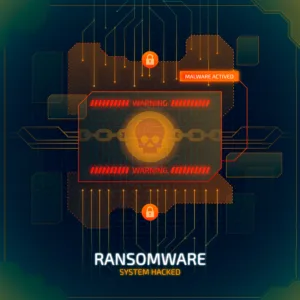
Table of Contents
Introduction
In today’s digital age, data is the lifeblood across industries. From customer information to financial records, data fuels decision-making processes and drives innovation. However, with great reliance on data comes the risk of downtime and loss, which can have severe consequences for businesses.
In this blog post, we’ll delve into the importance of conducting postmortems on data downtime and loss incidents, exploring key lessons learned and best practices for maintaining data integrity.
Understanding Data Downtime and Loss
Data downtime refers to periods when critical data becomes inaccessible or unusable, disrupting business operations. This could result from various factors such as hardware failures, software glitches, cyberattacks, or even natural disasters.
On the other hand, data loss occurs when information is permanently erased or corrupted, often due to inadequate backups, human error, or malicious intent.
Why Postmortems Matter
Postmortems, also known as retrospectives or root cause analyses, are crucial for understanding the underlying factors contributing to data downtime and loss incidents. By conducting thorough postmortems, organizations can identify vulnerabilities, pinpoint areas for improvement, and implement preventive measures to mitigate future risks.
Moreover, postmortems foster a culture of accountability and continuous learning within the organization.
Key Lessons Learned from Postmortems
1. Proactive Monitoring and Alerting:
Many data downtime incidents could have been prevented or mitigated if organizations had implemented robust monitoring and alerting systems. Postmortems often reveal gaps in monitoring infrastructure or inadequate alerting mechanisms, highlighting the need for real-time visibility into data systems.
2. Redundancy and Failover Mechanisms:
Single points of failure are a common culprit in data downtime incidents. Postmortems emphasize the importance of implementing redundancy and failover mechanisms to ensure data availability and resilience against hardware or software failures.
3. Data Backup and Recovery Strategies:
Inadequate backup and recovery strategies can exacerbate the impact of data loss incidents. Postmortems underscore the need for regular backups, offsite storage, and comprehensive recovery plans to minimize data loss and downtime in the event of disasters.
4. Human Factors and Training:
Human error remains a significant contributor to data downtime and loss incidents. Postmortems shed light on the importance of employee training, clear procedures, and user-friendly interfaces to reduce the likelihood of errors that could compromise data integrity.
5. Security Practices and Incident Response:
Cyberattacks pose a constant threat to data integrity, making robust security practices and incident response capabilities essential. Postmortems highlight the importance of proactive security measures, such as encryption, access controls, and intrusion detection systems, as well as swift and coordinated responses to security breaches.
Best Practices for Conducting Postmortems
1. Timeliness:
Conduct postmortems promptly after data downtime or loss incidents to capture accurate information and facilitate timely remediation efforts.
2. Cross-functional Collaboration:
Involve stakeholders from various departments, including IT, security, operations, and management, to gain diverse perspectives and identify comprehensive solutions.
3. Honesty and Transparency:
Foster a culture of honesty and transparency during postmortems, encouraging team members to openly discuss contributing factors and lessons learned without fear of blame or reprisal.
4. Actionable Insights:
Focus on extracting actionable insights from postmortems, prioritizing recommendations that address root causes and strengthen data resilience.
5. Continuous Improvement:
Treat postmortems as opportunities for continuous improvement, revisiting past incidents periodically to assess the effectiveness of implemented measures and identify new risks.
Conclusion
Data downtime and loss incidents can have significant repercussions for businesses, ranging from financial losses to reputational damage. However, by conducting instructive postmortems, organizations can transform these setbacks into valuable learning opportunities.
By understanding the root causes of data downtime and loss, implementing preventive measures, and fostering a culture of continuous improvement, businesses can enhance data integrity and resilience in an increasingly digital world.
Remember, in the realm of data management, the lessons learned from failure are often the most instructive guides to success.
Read more on https://cybertechworld.co.in for insightful cybersecurity related content.




















Your point of view caught my eye and was very interesting. Thanks. I have a question for you.
I can’t express how much I value the effort the author has put into producing this exceptional piece of content. The clarity of the writing, the depth of analysis, and the wealth of information presented are simply impressive. Her zeal for the subject is obvious, and it has undoubtedly resonated with me. Thank you, author, for offering your knowledge and enlightening our lives with this incredible article!
I do agree with all the ideas you have presented in your post. They are really convincing and will certainly work. Still, the posts are very short for beginners. Could you please extend them a bit from next time? Thanks for the post.